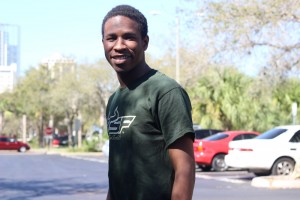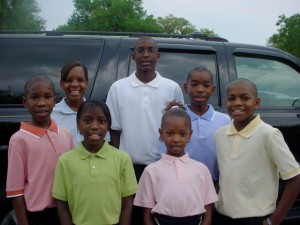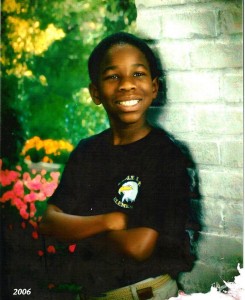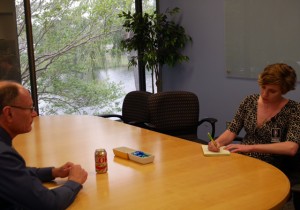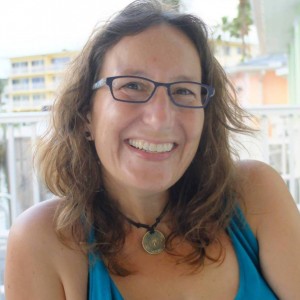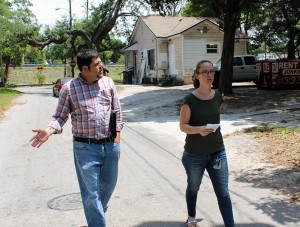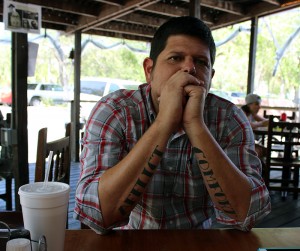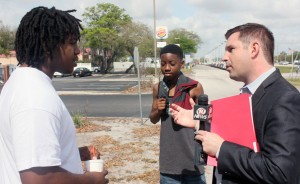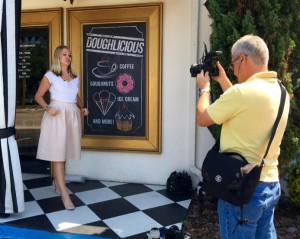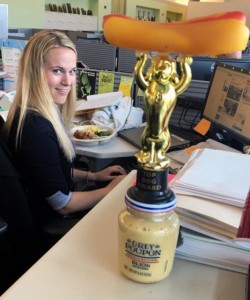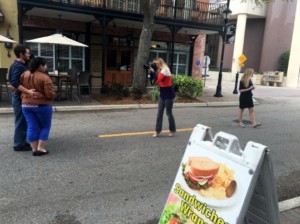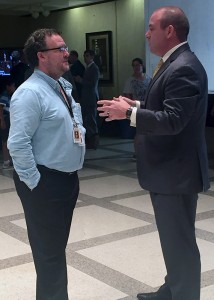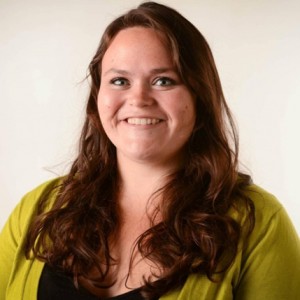
Johnson got into journalism when she was 14.
By TATIANA CUBAS
USFSP Student Reporter
SARASOTA – As an investigative reporter, Elizabeth Johnson searches for stories that otherwise would go untold.
For nine months, she pored over 1,400 pages of police and court records about a black man who was serving a 30-year sentence for the armed robbery of a white woman and her children.
Although prosecutors and then a jury concluded the case against Andre Bryant was solid, Johnson showed that it was full of holes. Her lengthy story in the Sarasota Herald-Tribune helped free him in October 2015, seven years after he began his sentence.
“It’s still shocking to think I played a part in getting an innocent man out of prison,” Johnson wrote three months later.
“As I began digging, more and more information pointed to Andre’s innocence – a witness recanted her statement, a juror told me that he never believed Andre was guilty and no one could explain how evidence found far from the route Andre took while fleeing police — a helicopter tracking him overhead — got there.”
In three years at the Herald-Tribune, Johnson, 25, has done some of the paper’s most distinctive work. But not all of it is so serious, and not all is for the print product.
Johnson contributes to unravel.us, a website that is billed as “an online news and entertainment platform for young professionals” in Sarasota and Bradenton. It appeals to the generation that grew up on Facebook, uses Instagram to post photos of food, and seems to have an opinion on almost everything.
“Like you, we’re not going to be bogged down with the traditional way our parents get the news,” it says.
While unravel.us is produced by the Herald-Tribune, readers and viewers would never know the traditional newspaper is involved.
“We did a focus group with young professionals who said they weren’t interested in getting news from the Herald-Tribune,” Johnson said. “They felt that the Herald-Tribune didn’t give them the news they want.”
Although unravel.us has a separate home, its stories are also posted to the newspaper’s website.
Johnson is also part of an online video feature called “Besties with Katy and Liz” with fellow reporter Katy Bergen.
Each video lasts five to 10 minutes, as the reporters – best friends, or “besties” – chat with guests and quickly dissect the news, giving viewers “just enough information to sound intelligent at happy hour.”
“Besties” is filmed in a window setting in the newsroom so viewers see a backdrop of downtown Sarasota and trees with bright green leaves – a view of city lifestyle with a tropical side.
When the videos feature a guest, there is an increase in viewers, Johnson said.
Johnson said she got her start in journalism at a radio station when she was 14. She graduated from Murray State University in far western Kentucky in 2012 with a bachelor’s degree in journalism.
At the student paper, she was a sports reporter as a freshman, sports editor as a sophomore and editor-in-chief as a junior and senior.
She came to Florida right after graduation for a job at the Bradenton Herald, then moved to the Herald-Tribune 10 months later, first as a cops reporter and then investigative reporter.
Nowadays reporters do a bit of everything in their work, reporting and shooting photos and video while bouncing from issue to issue. “Journalism is not a thriving industry,” Johnson said.
Her favorite story was the one that helped free Bryant from prison.
While she was investigating the case, she said, she talked with Bryant’s son, who was 6 months old when his father was arrested. When she asked him if he knew his father’s favorite color, he said he didn’t.
“I can’t imagine not knowing my mom’s favorite color,” Johnson said.
In her story, published Sept. 21, 2014, she wrote:
It took detectives four hours to book a suspect and the state of Florida just 10 months to try, convict and sentence a man to three decades behind bars.
The case was tidy. Open, shut; bad guy in prison.
But some of it – a lot of it, actually – didn’t add up.
After her story appeared, the Innocence Project of Florida took on Bryant’s case. The state attorney’s office agreed to review it and eventually asked the court to vacate Bryant’s conviction because of reasonable doubt. He was released from prison.
Johnson said her second favorite story was one she reported and wrote with Bergen.
Sarah Harnish had killed herself and her 17-month-old daughter. Many readers could assume the worst about Harnish, but the Herald-Tribune’s story revealed that she was silently suffering from mental illness.
Johnson’s project these days has her manually entering data from public records into a spreadsheet.
As people who’ve seen the movie “Spotlight” know, she said, that’s what Boston Globe reporters did in discovering that the Catholic Church had covered up years of systemic child abuse by priests.

